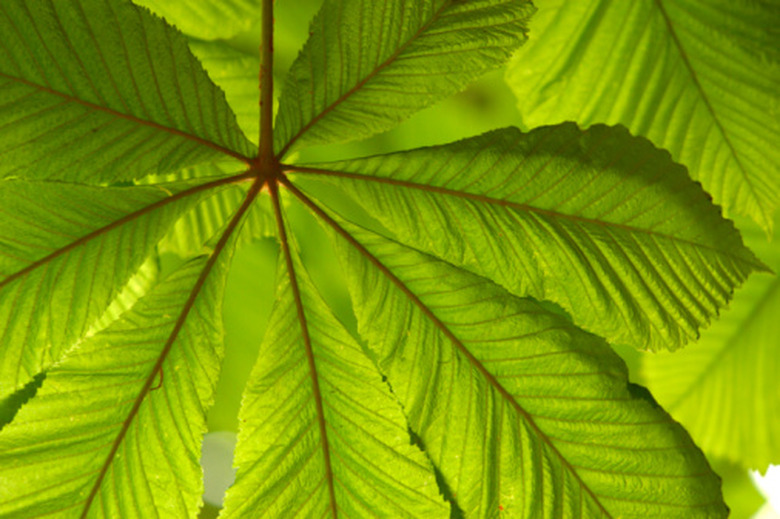What Organisms Carry Out Photosynthesis?
Most, if not all, the creatures on Earth rely on photosynthesis in one way or another. This places extra importance on the major photosynthesizing organisms, plants, algae and specialized bacteria, but members of the family Animalia have also adapted to use the process. These species, called autotrophs, take in water, carbon dioxide and the light from the sun and use it to create a simple sugar for their own use. The process releases sugar, oxygen and water.
Species like plants, the most famous autotrophs, create the compounds necessary for cellular respiration, a process carried out by heterotrophs, such as humans, who breathe in the oxygen released by the plants and, in turn, exhale carbon dioxide. Humans and many other animals also eat plants and algae to absorb the sugar they create. This relationship between heterotrophs and autotrophs drives life on Earth.
TL;DR (Too Long; Didn't Read)
Plants, algae, bacteria and even some animals photosynthesize. A process essential to life, photosynthesis uses carbon dioxide, water and sunlight, and converts it into sugar, water and oxygen.
Plants – Quintessential Photosynthesizers
Plants – Quintessential Photosynthesizers
Photosynthesis in plants takes place in specialized organelles called chloroplasts. Located in specific plant cells such as leaf cells, chloroplasts appear in most species that use oxygenic photosynthesis, which – as its name implies – releases oxygen. Other organisms, such as humans, eat plants for sustenance. Rainforests, which host a startling array of plant life, generate 20 percent of Earth's oxygen.
Algae – a Tiny Force to Be Reckoned With
Algae – a Tiny Force to Be Reckoned With
Like plants, species of algae have chloroplast. Algae are single-celled organisms that have tiny bodies, some of which cannot be seen without the aid of a microscope. However, algal blooms, large collections of individual algae, can be seen from space. Macroscopic collections of algae can grow to 165 feet and can often be found in large "forests." Phytoplankton, a broad category of microscopic photosynthesizing organisms (mostly algae), create around 70 percent of Earth's oxygen.
Bacteria May Have Started It All
Bacteria May Have Started It All
The endosymbiotic theory posits that chloroplasts found in algae and plants may have their origins in oxygenic cyanobacteria, another classification of photosynthesizing species. Around 1.5 million years ago, these free-floating organisms moved into plant cells, where the two began a mutually beneficial partnership, the theory suggests. While some bacteria use carbon dioxide and release oxygen, others like green and purple sulfur bacteria make use of sulfur in the photosynthetic process.
Animals Can Do It Too
Animals Can Do It Too
Some scientists theorize that animals don't photosynthesize because the process requires large amounts of surface area, which would make a species easier to hunt and eat. Others suggest it's a matter of diet or that too much sun exposure could increase an organism's risk of overheating. However, a few animal species do make use of it. For example, some sea slugs steal the genetic information from algae that make up their diet, allowing them to create their own food as autotrophs.
References
- University of California Museum of Paleontology: Introduction to Cyanobacteria
- Encyclopaedia Britannica: Photosynthesis
- Encyclopaedia Britannica: Chloroplast
- Rainforest Foundation: Commonly Asked Questions
- Encyclopedia Britannica: Seaweed
- National Ocean Service: What Are Phytoplankton
- University of Rhode Island: Save the Plankton, Breathe Freely
- University of Illinois: The Photosynthetic Process
- University of Michigan: 4 Incredible Photosynthetic Animals
- PLOS Blogs: Why Animals So Rarely Photosynthesize
Cite This Article
MLA
Johnson, Doug. "What Organisms Carry Out Photosynthesis?" sciencing.com, https://www.sciencing.com/organisms-carry-out-photosynthesis-8497733/. 4 May 2018.
APA
Johnson, Doug. (2018, May 4). What Organisms Carry Out Photosynthesis?. sciencing.com. Retrieved from https://www.sciencing.com/organisms-carry-out-photosynthesis-8497733/
Chicago
Johnson, Doug. What Organisms Carry Out Photosynthesis? last modified March 24, 2022. https://www.sciencing.com/organisms-carry-out-photosynthesis-8497733/
